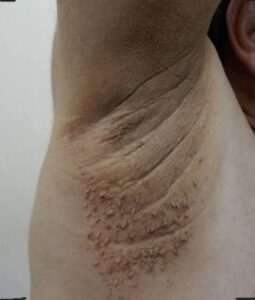9 Subtle Signs That Could Point to Diabetes

Diabetes is a serious condition that often develops silently, with few warning signals in its early stages. Recognizing the subtle indicators early on can make a huge difference in managing or even preventing the progression of this disease. Here are nine signs to keep on your radar:
1. Darkened Skin in Certain Areas
If you notice patches of skin that are darker and have a velvety texture—often found around the neck, underarms, or groin—this could be a condition called acanthosis nigricans. It is frequently linked to insulin resistance and can be an early indicator of prediabetes or diabetes. These patches should be evaluated by a healthcare professional.
2. Unexplained Weight Loss
Dropping pounds without trying—especially if your appetite hasn’t decreased—might signal that your body isn’t using glucose properly. When cells can’t absorb sugar for energy due to insulin issues, the body starts breaking down fat and muscle for fuel, leading to weight loss.
3. Blurry Vision
Fluctuating blood sugar can affect your eye’s lens, causing swelling and changes in focus. This can result in intermittent blurry vision, one of the early signs that your body might be struggling to regulate blood sugar. It’s a symptom worth mentioning to your doctor.
4. Clusters of Yellowish Bumps on the Skin
Small, yellow-tinted bumps—especially on the thighs, elbows, knees, or buttocks—can be a sign of eruptive xanthomatosis, a condition tied to high triglyceride levels. This skin issue may appear in people with poorly controlled diabetes.
5. Constant Fatigue
If you’re feeling persistently worn out, even after a full night’s rest, it could be due to your body’s inability to effectively turn glucose into energy. This energy deficit may leave you feeling chronically tired or sluggish.
6. Excessive Thirst and Frequent Bathroom Trips
One of the earliest and most common signs of rising blood sugar is increased thirst and urination. When sugar builds up in the blood, the kidneys work harder to filter it out, resulting in more frequent trips to the bathroom and a lingering feeling of dehydration.
7. Skin Tags
While usually harmless, a sudden increase in skin tags—especially around the neck, armpits, or eyelids—can sometimes be a sign of elevated insulin levels. In some cases, numerous skin tags have been linked to type 2 diabetes or insulin resistance.
8. Slow-Healing Cuts and Bruises
If minor wounds are taking longer than usual to heal, it might be due to poor circulation and damaged blood vessels—a result of chronically high blood sugar. This impairs the body’s natural healing abilities and leaves injuries more prone to infection.
9. Tingling, Numbness, or Burning Sensations
Unusual sensations in your hands, feet, or legs—such as tingling, numbness, or burning—can be a symptom of diabetic neuropathy. This occurs when high blood sugar levels damage nerves over time. It often starts subtly but can worsen if left unaddressed.
Final Thought
If you recognize one or more of these signs, especially if they persist or worsen, it’s important to speak with a healthcare provider. Early detection of diabetes or prediabetes can empower you to take steps to protect your health and improve your long-term well-being.